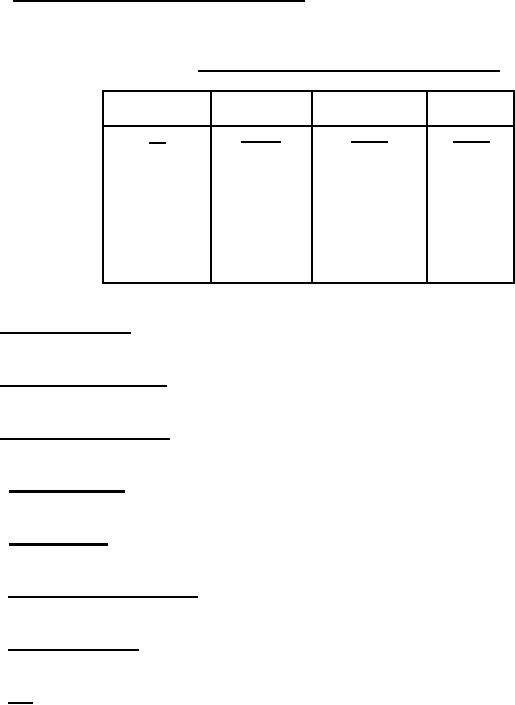
MIL-PRF-23648/2E
3.6.2 Resistance at temperatures other than 25°C. Resistance at temperatures other than 25°C are
determined by multiplying the zero power resistance at 25°C by the factors shown in table II for the
applicable resistance ratio.
TABLE II. Resistance temperature characteristic factors.
Temperature
Ratio
Ratio
Ratio
19.8 (A)
29.4 (B)
48.7 (C)
°C
Ohms
ohms
ohms
54.9
100
-55
5.77
7.38
8.80
-15
2.85
3.27
3.66
0
1.00
1.00
1.00
25
.405
.360
.320
50
.184
.148
.116
75
.0923
.0675
.047
100
.0503
.0340
.0205
125
3.7 Short time overload. The maximum allowable change in zero power resistance as the result of the
short time load test shall be ±2 percent.
3.8 Low temperature storage. The maximum allowable change in zero power resistance as the result
of the low temperature storage test shall be ±2 percent.
3.9 High temperature storage. The maximum allowable change in zero power resistance as the result
of the high temperature storage shall be ±1 percent.
3.10 Terminal strength. When tested in accordance with 4.2, the maximum allowable change in zero
power resistance shall be ±1 percent.
3.11 Thermal shock. The maximum allowable change in zero power resistance as the result of the
thermal shock test shall be ±2 percent.
3.12 Resistance to soldering heat. The maximum allowable change in zero power resistance as the
result of the resistance to soldering heat test shall be ±1 percent.
3.13 Moisture resistance. The maximum allowable change in zero power resistance as the result of
the moisture resistance test shall be ±5 percent.
3.14 Life. The maximum allowable change in zero power resistance as the result of the life test shall
be ±5 percent.
4
For Parts Inquires call Parts Hangar, Inc (727) 493-0744
© Copyright 2015 Integrated Publishing, Inc.
A Service Disabled Veteran Owned Small Business